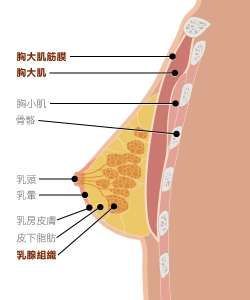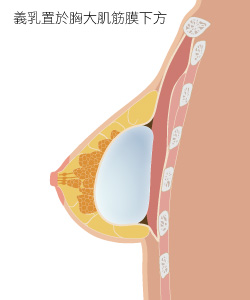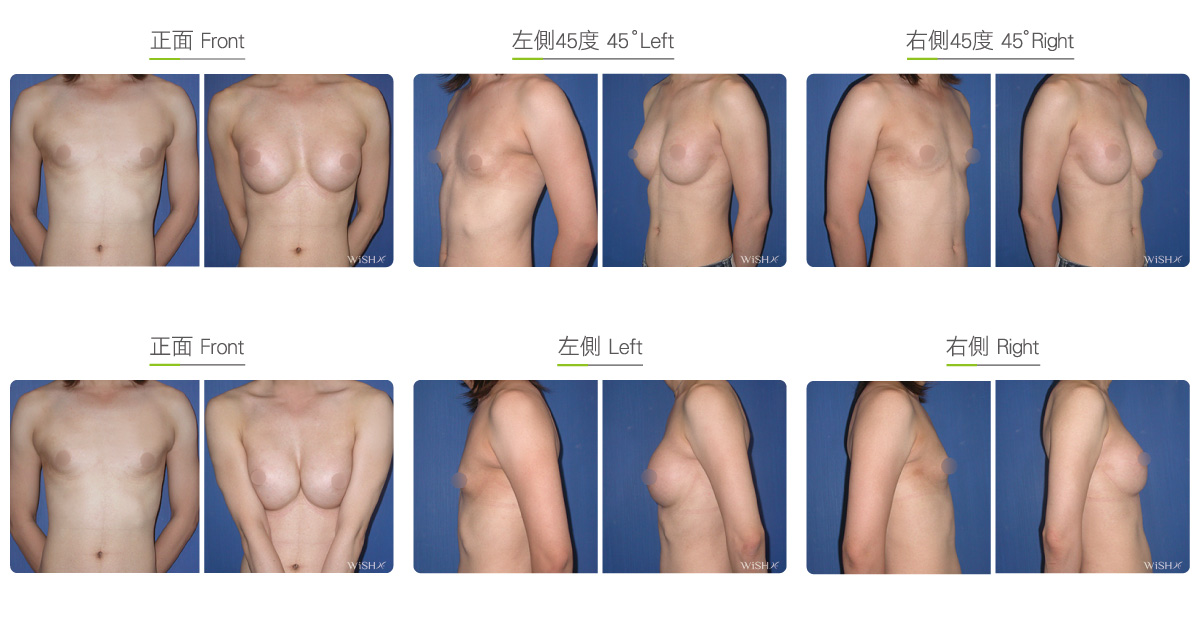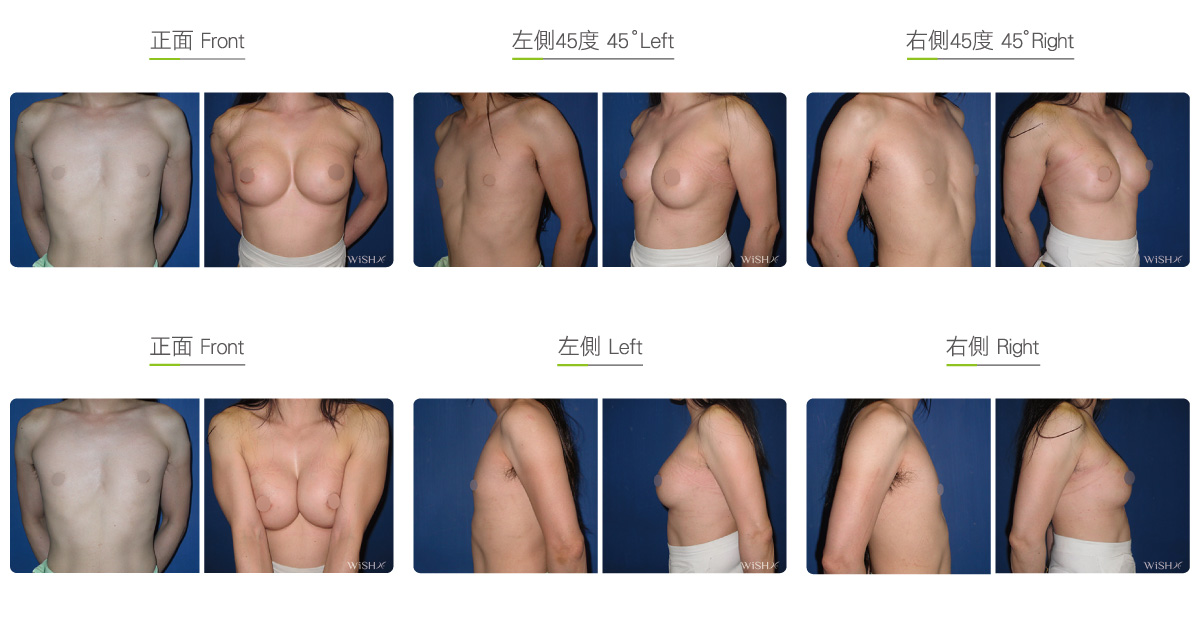Male Breast Augmentation
Although not common in Taiwan, male breast augmentation accounts for approximately 3–5% of all breast augmentations and is the most widely conducted plastic surgery in male-to-female transgender populations. Because the breasts are located at sites concealed by clothes, obvious changes are less likely to be noticed. Furthermore, breast augmentation is reversible if patients do not like the results. Because breast implants can be removed at any time and psychological impacts are less strong than those from genital organ surgery, it is frequently considered to be the touchstone of transgender identification by male-to-female populations and is an inevitable threshold toward actual gender transformation in the future. Moreover, patients with an intention of becoming a transgender must go through a psychological adjustment period after breast augmentation; dressing, social behaviors, and relationship with peers and families all change, so some medical viewpoints consider that male breast augmentation helps differentiate or ascertain the patient’s sexual orientation. If a patient is able to accept the physical attacks and mental pressure brought about by the surgery, patients may consider undergoing further genital organ surgery in the future.
Male breast augmentation is almost the same as female breast augmentation in process and procedures. Nevertheless, distinct differences in skin elasticity, chest shape, and skeletal framework affect the selection of the model and material of the breast implant. Currently, Dr. Chuang performs a total endoscopic procedure to conduct male breast augmentation. A surgical incision is made at either the armpit or areola, but it seems to be less suitable to emplace a large-volume breast implant through an areolar incision if the male areola is too small. If patients hope for an obvious enlargement in breast size, the transaxillary or inframammary approach is more appropriate. Other aspects of differences between male and female breast augmentations are as follows:
Subfascial breast augmentation is preferable for implant emplacement
Because male skin is typically tougher and tenser than female skin and pectoral muscles are more abundant in males than in females, if breast implants are emplaced under the pectoralis major muscle, it would be harder to conduct postoperative breast massage. Furthermore, breast implants may also show a displacement or deformity due to the frequent compression or squeezing of the pectoral muscle, which affects the touch and naturalness of the breasts, rendering negative postoperative results. Therefore, Dr. Chuang usually recommends that with adequate skin coverage, the sub-fascial layer (above the pectoralis major muscle) is where the breast implant should be emplaced. In this way, breast implants are less likely to become deformed due to the stretching of the strong male pectoral muscles and postoperative breast massage is easier and painless, which greatly contributes to the future shape and softness of the breasts.


Textured silicone implants are considered as priority
The male chest is relatively robust. Despite the lack of female mammary tissues, the male breast has adequately thick skin and fats to cover the whole breast implant. The male chest seldom produces breast implant edges or creases after breast augmentation due to the excessively thin skin, so males have diverse options for breast implant materials and can consider textured silicone implants first, which may be less acceptable to skinny females. Textured breast implants do not require active or long-term breast massage, with the breasts being able to rapidly fixate; this is suitable for males who are not good at the self-care of breasts. In addition, textured silicone implants are less likely to incur severe capsular contracture, which despite not being as natural or soft to touch, do not cause breast hardening or deformities or other complications due to improper postoperative massage. In addition, WiSH Clinic provides the latest tear-drop textured breast implants (anatomical implants), which customize the breast shape better than the aforementioned round breast implants and are very suitable for males with flat chests to sculpt the natural breast shapes.
Larger size of a breast implant should be used
Because the male chest is commonly broader than the female breast and bilateral nipples are relatively distant, if the breast implant is small in size and diameter, it is very difficult to make both breasts concentrate to the midline; even an aggressive postoperative massage will be unable to effectively sustain the space separated by the surgery. In view of this, Dr. Chuang frequently recommends male patients to choose a relatively larger size of breast implants. This not only matches the robust shoulder and chest circumference of males to make the figure proportion more coordinated but also brings bilateral breast implants closer to the midline, making it easier to sustain the agreeable cleavage. Moreover, as the male chest is completely flat, the congenital chest skin, particularly, the skin near the central sternum, is generally very tight, so apart from the relatively wider diameter or larger size of breast implants, patients can choose a relatively higher profile breast implant to make a good projection of the breast from the lateral profile. This effectively props up the original tight skin and enhances the tear-drop shape of the breast and also avoids the compression of the tight skin to the breast implant, which may be unable to present the esthetic breast curvature, making it difficult to represent the deep V cleavage found in females.
The currently popular autologous fat breast augmentation is not an appropriate option for breast augmentation in males because male fats are mostly superficially located and the quality and quantity of adipocytes are poorer than those in females. Combined with the relatively thick and tight skin of males, soft fat globules are unable to support the shape and size of the breasts, and the future self-absorption rate will be higher, thus unable to steadily and effectively provide satisfactory results.
Surgical conditions
Duration
- Type of anesthesia: General anesthesia
- Type of incision: A 3.5-cm incision at the armpit or inframammary fold, or a 2.5-cm incision at the periphery of the areola
- Recovery: 2–3 days
- Removal of stitches: 7–10 days
General instructions
No food and water on the day of surgery
- Perform frequent stretching activities for 1 month postoperatively to prevent armpit scar adhesion.
- Do not smoke for 3 months postoperatively to avoid capsular proliferation.
- Avoid excess arm exertion work or activities for 3 months postoperatively, and do not wear a hard wire or concentrated bra, which may cause compression to breast implants and deformities.
- Keep massaging the breast every day for 6 months postoperatively to sustain the breast shape and softness when doing smooth round breast implants.
Ideal candidates
- Male patients who want to have the breasts of females
- Patients who are interested in or require transvestism or cross-dressing
- A preconditioned surgery for those who will undergo genital organ reconstruction in the future
Possible complications
- Scar
- Capsular contracture
- Breast hardening or deformity
- Decrease in nipple sensitivity
Surgical advantages
-
It is able to fulfill the requirements for the change of breast appearance in male-to-female transgender patients.
-
The emplacement of breast implants sculpts projected and concentrated breasts.
-
Requirements for breast size can be met at one time.
-
Surgical results are stable and consistent.
-
If not necessary in the future, the implants can be completely removed at any time.
Surgical drawbacks
-
The surgical incision especially in areola may leave a scar.
-
Patients with tight skin are prone to show ball-like or unnatural appearances.
-
The male skin and muscles are relatively thick, which may affect the efficiency of postoperative massage.
-
Improper postoperative care is likely to induce capsular contracture or a breast deformity.
-
The duration of breast massage care may be longer than that for female breast augmentation.
Probable procedure in conjunction
Comparison of male and female breast augmentations
| Male breast augmentation | Female breast augmentation | |
|---|---|---|
| Ideal candidates | Transwomen, transvestic fetishism | Patients with congenital breast maldevelopment, uneven breasts, postpartum or aging-related breast sagging |
| Surgical method | Endoscopic breast augmentation | Endoscopic breast augmentation |
| Surgical incision | Mainly the armpit | Armpit, areola, or inframammary margin |
| Implant type | Preferably textured breast implant (approximately 60%) | Primarily smooth breast implant (over 60%) |
| Implant model | Wide diameter or high projected | Moderate diameter and height |
| Emplacement plane | Subfascial | Subpectoral or subfascial |
| Skin tightness | Tense | Pliable |
| Skin/muscular coverage | Thick | Thin |
| Palpable breast implant edge (rippling) | Seldom | Probable |
| Difficulty in massage | Relatively high | Relatively low |
| Postoperative care duration | Probably extended | 6 months on average |
| Autologous fat injection | Not applicable | Dependent |


